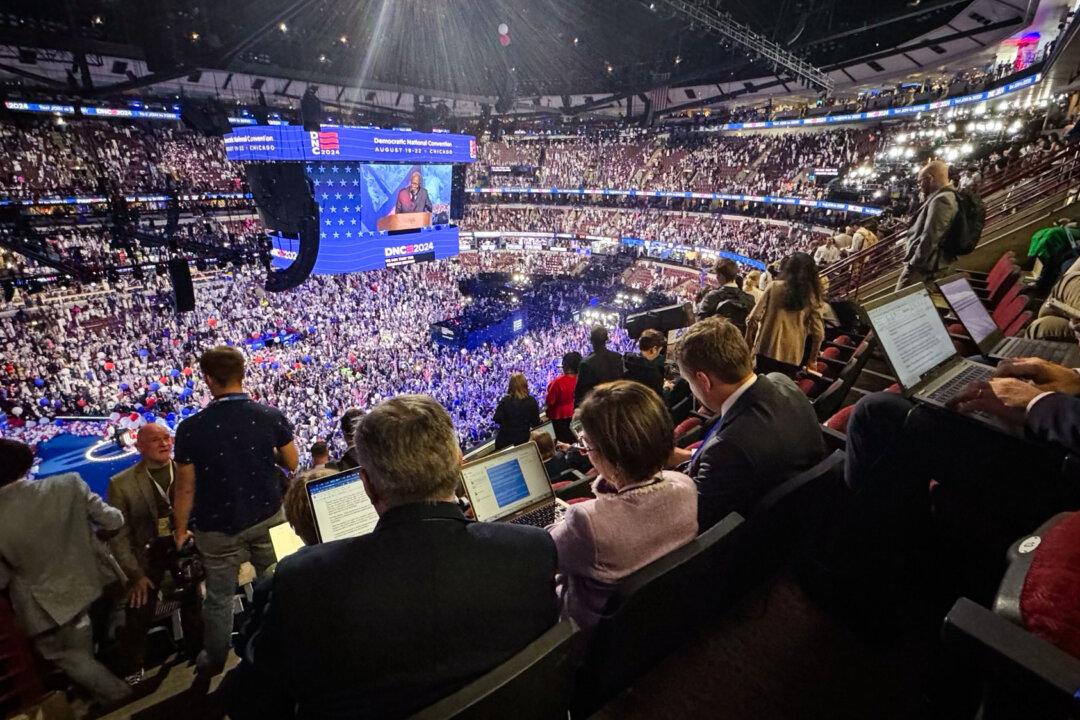The U.S. Senate has adopted a proposed fiscal year (FY) 2024 $866.3 billion defense budget that does not include the “culture war” amendments the House installed in its version of the massive appropriations package, setting up a chamber clash in the coming weeks that could imperil the “must-pass” bill’s approval before the new fiscal year begins Oct. 1.
“We have a defense budget that meets the moment we face in an increasingly dangerous world,” Senate Armed Forces Committee ranking member Sen. Roger Wicker (R) said after the vote.
The Senate’s weeklong NDAA deliberations were relatively sedate compared to how the defense budget was debated on the House floor.
The Senate version includes none of these add-ons, sponsored primarily by House Freedom Caucus conservatives, which Senate Majority Leader Chuck Schumer (D-N.Y.) in floor remarks derided as “a race-to-the-bottom” infusion of ideology into the nation’s defense budget, vowing Democrats would ensure they are not in the final bill.

Next Stop: Conferencing
While the differences in the two proposed budgets appear to be acute, it is not unusual for the Senate and House to produce different versions of the federal government’s 12 annual appropriations bills, including the massive defense budget.Differences between appropriations and the version the Senate approves will be resolved in conferencing between the chambers, a somewhat informal negotiation with each represented by a temporary, ad hoc panel. In NDAA talks, armed service committee members are usually named to conference panels.
“I look forward to go to conference to work on a bill on a bipartisan basis as vigorously as we did in adopting this bill,” Senate Armed Forces Committee Chair Sen. Jack Reed (D-R.I.) said.
“Our threats are much greater now than they were in 1961 when the first NDAA was passed,” Mr. Wicker said.
The budget includes a 5.2 percent pay raise for uniformed service members, money for accelerated submarine construction, an amphibious assault ship the Marines requested, and a sharp focus on countering China in the Pacific and Russia in Europe.
Both chambers’ NDAAs funnel funding and resources to Taiwan as it prepares a “porcupine defense” to fend off a threatened invasion by the Chinese regime.
The Senate’s NDAA contains “provisions to solve the recruiting crisis, including a massive expansion of the ROTC program, a citizenship builder, support for submarine programs, the development of a sea-launched nuclear cruise missile” and multi-year appropriations that send “a clear signal to our industrial base and we will produce these arms here in the United States,” Mr. Wicker said.
The bill is notable for its “willingness to harness emerging technologies, including AI [Artificial Intelligence], offensive cyber, hypersonics, and unmanned vehicles,” he said. “We intend to lap Beijing in a 100-year marathon of innovation.”

Spending Cap Also An Obstacle
There were 1,217 provisions in the Senate NDAA, 504 from members that were adopted in markups. More than 930 amendments were submitted with several dozen debated between July 18 and July 27.The bill “confronts the challenges we face today in a very difficult world,” Mr. Reed said, noting that it calls for “re-catalyzing our [nuclear weapons] triad and [look] closely at space to prevent space from undermining our national security. I am confident that what we have done will provide the resources [the military] need to meet the challenges of a dangerous world.”
Resolving the differences between the House’s amendment-larded defense budget and the Senate’s version isn’t the only obstacle the NDAA faces in being adopted before the fiscal year begins Oct. 1.
Under terms of the new debt-ceiling law negotiated between House GOP leaders and the Biden administration, failure to adopt the NDAA or the other annual spending bills by Oct. 1 will automatically induce a 1-percent across-the-board spending trim.
The debt-ceiling deal was approved by the House on May 31 and the Senate on June 1. It suspends the nation’s $31.4 trillion borrowing limit until January 2025 in exchange for caps on federal discretionary spending over the next two years.
Under the deal to provide the 3.3 increase in defense spending, discretionary non-defense spending in the FY24 federal budget is capped at $703.7 billion and then limited to no more than a 1 percent increase in FY25.
House Republicans have proposed trimming an additional $120 billion from federal discretionary non-defense spending with proposed cuts of 15-to-30 percent for Agriculture, Commerce, Justice, Interior, Labor, Education, and Health and Human Services departments.
Key Senate Republicans, including Senate Minority Leader Sen. Mitch McConnell (R-Ky), Sen. Susan Collins (R-Maine), Sen. Lindsey Graham (R-Fla.), and Wicker are unhappy with the spending cap and want more money for the Pentagon, perhaps in a separate appropriations package this fall.
Ideally, he wanted to increase defense spending beyond the 3.3-percent cap to as much as 5 percent, Mr. Wicker said.
But not everyone always gets want they want, he said, calling the Senate NDAA “a strong bipartisan product.”





